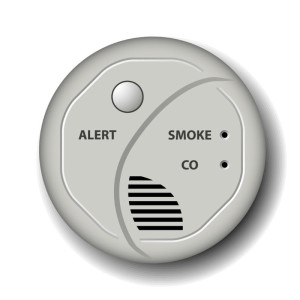Carbon Monoxide Safety
When it comes to fireplace and chimney safety, there is more to talk about than simply chimney fires. Of course, you should always be aware of the signs of a chimney fire and of the ways to prevent this hazardous situation, but you should not forget about other dangers that could be lurking within your chimney. One of these dangers is carbon monoxide poisoning. The National Safety Council has reported that the Center for Disease Control and Prevention (CDC) found that more than 400 people die from accidental carbon monoxide poisoning every year in this country. Even more alarming, more than 20,000 Americans end up in the emergency room from breathing in this toxic gas, and 4,000 people must be further hospitalized. Known as “the silent killer,” carbon monoxide is very dangerous because you cannot taste, smell, or see this gas if it leaks into your home. Atlas Chimney would like to tell you more about carbon monoxide and how you can prevent being poisoned by this byproduct of combustion.
What are the symptoms of carbon monoxide poisoning?
 The symptoms can vary, depending on how much exposure you have had to carbon monoxide. Low to moderate levels of exposure can show symptoms of nausea, headache, dizziness, fatigue, and shortness of breath. Since these symptoms are so much like the ones of the flu or a common cold, low-level carbon monoxide poisoning can be difficult to diagnose. If you continue to inhale carbon monoxide, your symptoms can become more severe, including mental confusion, vomiting, loss of coordination, loss of consciousness, and death. If you are suffering from the symptoms of low-level carbon monoxide poisoning for longer than two weeks, you may want to ask your doctor for a blood test to see if any carbon monoxide can be found in your system.
The symptoms can vary, depending on how much exposure you have had to carbon monoxide. Low to moderate levels of exposure can show symptoms of nausea, headache, dizziness, fatigue, and shortness of breath. Since these symptoms are so much like the ones of the flu or a common cold, low-level carbon monoxide poisoning can be difficult to diagnose. If you continue to inhale carbon monoxide, your symptoms can become more severe, including mental confusion, vomiting, loss of coordination, loss of consciousness, and death. If you are suffering from the symptoms of low-level carbon monoxide poisoning for longer than two weeks, you may want to ask your doctor for a blood test to see if any carbon monoxide can be found in your system.
How can I prevent carbon monoxide poisoning?
Since carbon monoxide is basically invisible, the best way to prevent this poisoning is to install carbon monoxide detector alarms throughout your home. You will want to put these alarms outside of every bedroom, in the rooms with heating appliances, and on every level of your home. Other ways of preventing carbon monoxide poisoning include having a professional chimney sweeping and inspection every year, not using portable flameless chemical heaters indoors, and having all gas appliances serviced annually.
What should I do if the carbon monoxide detector alarm sounds?
When you hear this alarm go off, do not ignore it! You should move everyone in the house outside to breathe fresh air and immediately contact your local emergency services. Be sure everyone in your household has been accounted for, and wait for the emergency responders to let you know when you can go back into your house.
Want to know more carbon monoxide safety tips? Contact Atlas Chimney at 512-CHIMNEY to find out how we can help you prevent carbon monoxide poisoning in your home.
